#european brown hare
Explore tagged Tumblr posts
Text

Our adorable long-eared oat vacuums 🥰💜🐇🐇
📸 December 10th, 2024





#photography#wildlife#wild animals#european brown hare#european hares#lepus europaeus#brown hare#rusakko#hare#jänis#hares#fieldhare#peltojänis#cityhare#winter#suomi#finland
60 notes
·
View notes
Text
#biodiversity#brothers grimm#candice gaukel andrews#dna#easter#easter bunny#European brown hare#folklore#genes#genome#hares#mountain hare#natural habitat adventures#nathab#nature#science#scientific research#spring#wild#wildlife#world wildlife fund#wwf
0 notes
Text





Early morning. Värmland, Sweden (July 17, 2020).
3K notes
·
View notes
Text

By kurilinms at iNaturalist, CC-BY-NC
110 notes
·
View notes
Text
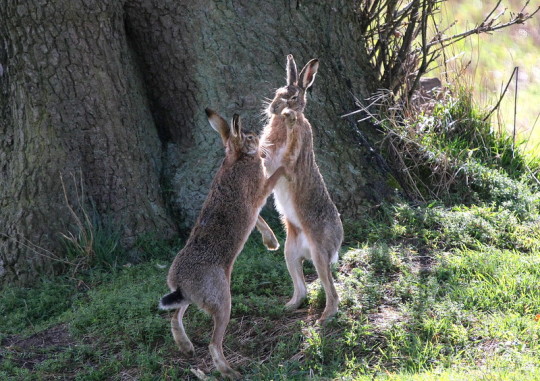
A pair of European hares (Lepus europaeus) box each other in England
by TONY 1
#european hare#brown hare#hares and jackrabbits#leporids#lepus europaeus#lepus#leporidae#lagomorpha#mammalia#chordata#wildlife: uk#wildlife: europe
340 notes
·
View notes
Text
This User Is A Hare
(Desert Sand)
—
One of the first requests I’ve completed on the new blog! And im so happy it’s hares!! These are a bit different from a lot of other icons because I opted to show off the eyes & do a side profile if the species required it. Hope this is satisfactory!!
—
European Hare


-
Black Tailed Jackrabbit


-
Snowshoe Hare


—
Credit not necessary but highly appreciated!
Please don’t edit or claim as your own!
—
Additional Links:
Userbox Masterlist || “This User Is A… Blank” List
#This user is a#this user is a hare#this user is a European hare#this user is a black tailed jackrabbit#this user is a snowshoe hare#hare userbox#european hare userbox#hare kin#hare therian#lagomorph userbox#therian#otherkin#therianthropy#snowshoe hare Userbox#black tailed jackrabbit Userbox#tan userbox#brown Userbox
32 notes
·
View notes
Text
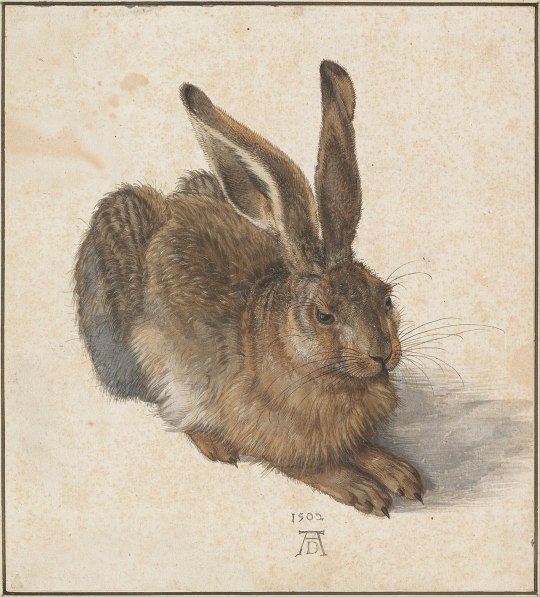
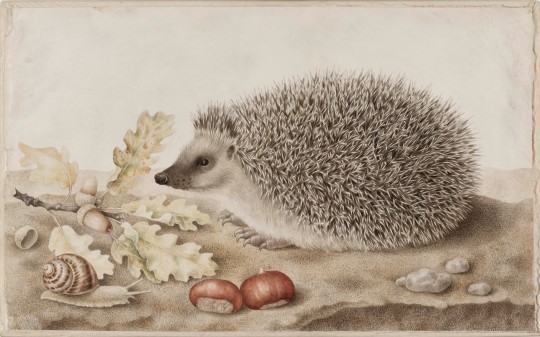
Albrecht Dürer (German, 1471 - 1528), Feldhase/Field Hare, 1502, watercolor and bodycolor.
Giovanna Garzoni (Italian, 1600 - 1670), A Hedgehog in a Landscape, 1643-51, bodycolor on vellum; private collection, West Hartford, Connecticut.
113 notes
·
View notes
Text
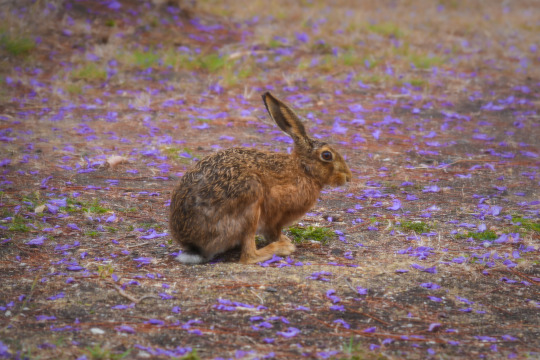


some non-bug creatures seen in my backyard recently. someday I will get a photo of a fairy wren that isn't blurry lol.
Brown Hare (Lepus europaeus).
Superb Fairywren, male (Malurus cyaneus).
#i hope you guys enjoy non-bug posts too#perhaps i should rename the blog if i keep posting other animals#ljsbugblog#non-bug post#mammals#lagomorpha#hares#rabbits#lepus#lepus europaeus#brown hare#european hare#birds#passeriformes#perching birds#maluridae#fairywrens#malurus cyaneus#superb fairywren
54 notes
·
View notes
Text
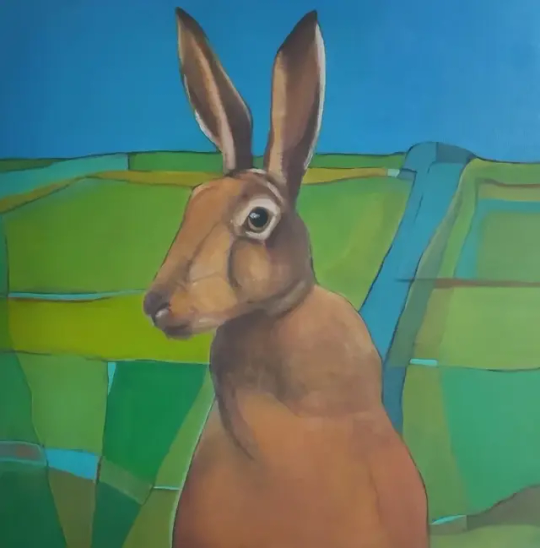
European hare (Lepus europaeus) - Linda Bouter , 2020-21.
Dutch , b. 1950s
Oil on canvas
30 notes
·
View notes
Text

#warrior cats#harestar#wc#wc designs#warrior#dark forest trainee#deputy#leader#windclan#my art#image description in alt text#his design is based off a european brown hare
13 notes
·
View notes
Text

Cuteness overloaded!!! ✨️💜🐰💜🐰💜🐰💜✨️
Prepare yourself for extra cute photos! A new hare baby has been running around the neighbourhood and finally I got to photograph her close. She came to pose for me underneath our living room window and she also took a nap next to our house wall. She is so tiny and soooooo cute!! 😍😍😍




The baby took a nap while the bigger hare was eating oat and sunflower seeds under our apple tree 💜🐇

Then the baby went closer to the big hare and they smelled each other, but the adult just continued eating and the baby jumped around the tree eating dandelion leaves and grass. Maybe it is her baby, it is possible 🥰🥰🥰




The baby jumped almost around our house and it was seemingly exploring every corner. It was such a delight to see the little hare jump and woble around the yard and stopping randomly sitying and wondering or eating. I really hope to see her again, blessed be you little hare! 🙏 💜💜💜🐰

#photography#wildlife photography#wildlife#wild animals#garden#european brown hare#european hares#lepus europaeus#brown hare#rusakko#field hare#peltojänis#hare#hares#november#suomi#finland
40 notes
·
View notes
Text
#nature video#european hare#brown hare#lepus europaeus#roe deer#capreolus capreolus#wildlife#meadow#forest#summer nights#arike fyris#uppsala#sweden#video
2 notes
·
View notes
Text

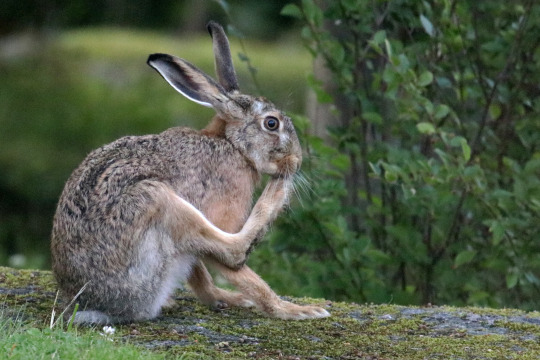

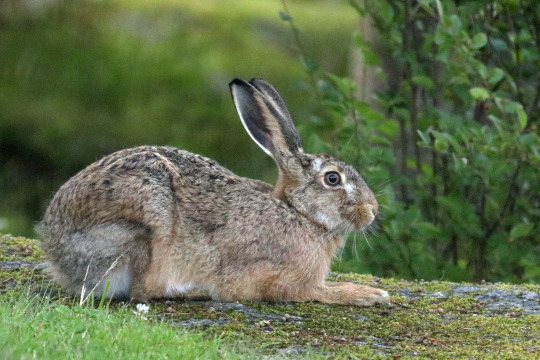
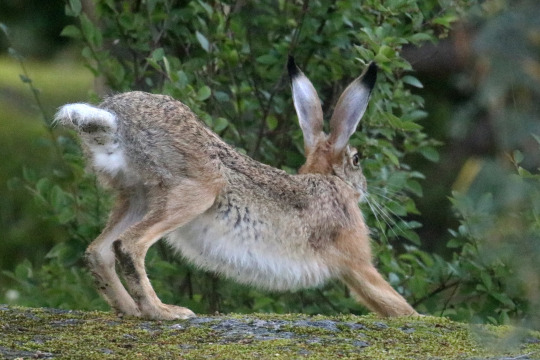


European hare/fälhare. Värmland, Sweden (July 27, 2023).
2K notes
·
View notes
Text
𝐎𝐬𝐭𝐚𝐫𝐚
⠂⠄⠄⠂⠁⠁⠂⠄⠄⠂⠁⠁⠂⠄⠄⠂⠄⠄⠂⠂⠄⠄⠂⠁⠁⠂⠄⠄⠂⠁⠁
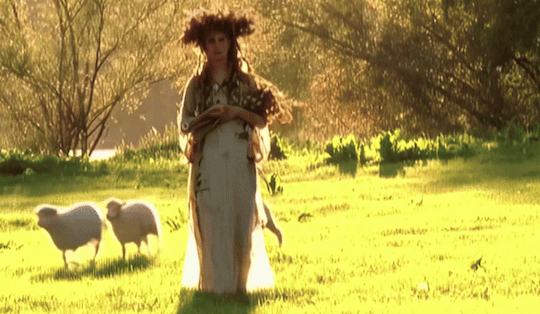
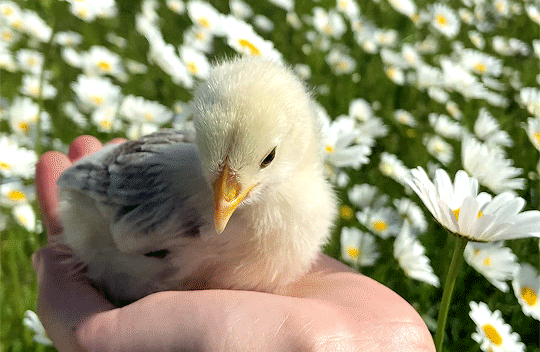

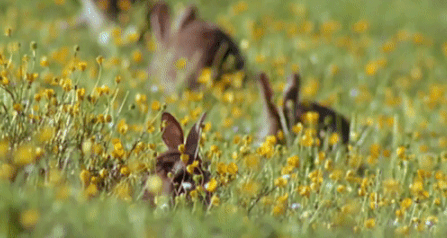


⠂⠄⠄⠂⠁⠁⠂⠄⠄⠂⠁⠁⠂⠄⠄⠂⠄⠄⠂⠂⠄⠄⠂⠁⠁⠂⠄⠄⠂⠁⠁
What is Ostara?
Ostara is a lesser sabbat that marks the official arrival of spring and takes place on the spring equinox, around March 20-21 in the Northern Hemisphere and September 20-23 in the Southern Hemisphere. It’s the moment when day and night are of equal length, symbolizing balance before the days begin to grow longer and light overcomes darkness. This is a time of renewal, fertility, and new beginnings, making it perfect for fresh starts and setting intentions for the season ahead.
⠂⠄⠄⠂⠁⠁⠂⠄⠄⠂⠁⠁⠂⠄⠄⠂⠄⠄⠂⠂⠄⠄⠂⠁⠁⠂⠄⠄⠂⠁⠁
The Legend of Ostara
According to a legend, Ostara is celebrated in honor of the Germanic goddess of the dawn and spring. The story goes that she once found a bird injured by the cold of winter. To save it, she transformed it into a hare, but the hare retained its ability to lay eggs. As a sign of gratitude, the hare painted and gifted eggs to the goddess, which is why eggs remain a central symbol of Ostara today. (1883, H. Krebs)
⠂⠄⠄⠂⠁⠁⠂⠄⠄⠂⠁⠁⠂⠄⠄⠂⠄⠄⠂⠂⠄⠄⠂⠁⠁⠂⠄⠄⠂⠁⠁
Goddess Eostre
Eostre, also known as Ostara, is the Germanic goddess of spring, fertility, and renewal. Her name is linked to the word "east" and the rising dawn, and some believe it means "Radiant Dawn." Eostre represents the spirit of spring and the return of fertility to the earth. Her arrival was traditionally celebrated with flowers, singing, bell ringing, and the lighting of new fires at dawn. She is often described as a beautiful young woman with flowers woven into her hair, accompanied by her consort and also her sacred animal, a hare. Sometimes he appears as a full-grown man, other times as a small rabbit cradled in her arms. Together, they bring eggs, a powerful symbol of the earth’s rebirth and fertility.
There isn’t much information about Eostre, but she is mentioned in the writings of an 8th-century monk, Venerable Bede. He recorded that the pagan Anglo-Saxons of medieval Northumbria held festivals in her honor during the month of April. Other than this, we don’t know much about how she was worshiped in ancient times. However, by the 19th century, she had become an important figure in German folklore, appearing in literature, paintings, and stories. She is often depicted as a youthful maiden adorned with flowers, symbolizing nature’s renewal after winter.
Some ancient festivals are said to have honored her with offerings of flowers, eggs, and feasts, welcoming the warmth and life she brings. Venerable Bede documented these traditions around the year 700 CE while traveling through Europe, recording pagan customs for the Catholic Church. The Church later attempted to shift the focus from Eostre to the resurrection of Jesus, but many ancient traditions remained deeply rooted. Eventually, instead of trying to erase them, the Church adapted and merged the two celebrations, renaming their spring festival “Easter” as a way to unite both traditions.
⠂⠄⠄⠂⠁⠁⠂⠄⠄⠂⠁⠁⠂⠄⠄⠂⠄⠄⠂⠂⠄⠄⠂⠁⠁⠂⠄⠄⠂⠁⠁
The Symbolism of The Painted Eggs
Eggs have long been a symbol of fertility, renewal, and the emergence of new life. Many cultures have used painted eggs in their spring festivals, from ancient Egyptians and Persians to European pagans. In the context of Ostara, eggs represent the potential for new beginnings and the fertility of the land as it awakens from winter. Decorating eggs is a tradition that has continued for centuries, carrying the magic of transformation and the blessings of abundance for the coming season.
⠂⠄⠄⠂⠁⠁⠂⠄⠄⠂⠁⠁⠂⠄⠄⠂⠄⠄⠂⠂⠄⠄⠂⠁⠁⠂⠄⠄⠂⠁⠁
Magic Correspondences
Planets: Mars
Season: Spring
Element: Air
Time of the Day: Dawn, Early Morning
Tarot: The High Priestess, The Emperor, Sevend of Wands, Justice
Colors: All pastel colors, yellow, green, pink, blue, brown
Herbs: Sorrel, Mint, Rosemary, Ginger, Irish Moss, Tansy, Woodruff, Wood Betony, Star Anise, Catnip
Fruits: Strawberries, Tangerine, Bananas, Lemon, Grapefruit, Apple, Orange, Mulberries, Kiwi
Vegetables: Artichokes, Asparagus, Carrots, Spring Onions, Garlic, Wild Nettles, Mushrooms
Crystals: Aquamarine, Jasper, Amethyst, Rose Quartz, Green Aventurine, Moonstone. Amazonite
Runes: Teiwaz, Ehwaz, Berkana
Trees: Birch, Rowan, Dogwood, Ash, Alder
Godesses: Eostre, Freyja, Aphrodite, Isis, Hecate, Demeter, Gaia, Athena, Astarte, Minerva, Cybele, The Morrigan
Gods: Mars, Ares, Apollo, Pan, Cernunnos, Tyr, Odin, Osiris, Dagda, Adonis
Dragon: Grael, Sairys
Flowers: Daffodil, Hyacinth, Daisy, Tulips, Clover, Crocus, Violet, Rose, Jasmine, Lilac, Honeysuckle
Animals: Hare, Rabbit, Chicks, Lamb, Butterfly, Robin, Bee, Snake. Deer, Wolf
Magical Powers: Balance, Renewal, Action, New Beginnings, Hope, New Possibilities, Fertility, Rebirth
Symbols: Rabbits, Eggs, Flowers, Bees, Birds and Nests, Butterflies, Flower Crowns, Seeds
⠂⠄⠄⠂⠁⠁⠂⠄⠄⠂⠁⠁⠂⠄⠄⠂⠄⠄⠂⠂⠄⠄⠂⠁⠁⠂⠄⠄⠂⠁⠁
Activities to do:
🐰 Decorate your space with Ostara symbols like eggs, bunnies, baby chicks etc.
🐣 Start planting seeds in your garden.
🐰 Buy or pick fresh flowers and place them in your home.
🐣 Paint some eggs. Use simple colors or add sigils, runes, symbols or anything you want to attract.
🐰 If you have a farm or a garden, it's the perfect time to buy and raise baby chicks! <3
🐣 Enjoy a festive meal to celebrate both Ostara and Spring Equinox.
🐰 Do some painting or other creative activities.
🐣 Do a deep spring cleaning, you rearrange your furniture for a fresh start.
🐰 Clean up your garden.
🐣 Leave seeds in your garden for birds.
🐰 Spend time in nature and look for the first signs of spring.
🐣 Make a list of goals to accomplish before spring ends.
🐰 Burn some incense to cleanse your space.
🐣 Make special Ostara candles with seasonal colors or herbs.
🐰 Do a tarot, rune, or pendulum reading in the morning of Ostara.
🐣 Try an Ostara guided meditation to connect with the celebration.
🐰 Honor Goddess Eostre with offerings or prayers.
🐣 Make an Ostara magickal jar
🐰 Wear clothing or jewelry in Ostara colors.
🐣 Try new recipes, especially with eggs and carrots.
🐰 Drink some tea and relax.
🐣 Read about Ostara and its traditions.
🐰 Make a flower crown for yourself or a loved one.
🐣 Try colorful makeup inspired by spring.
🐰 Dye eggs naturally or try flower prints on them.
🐣 Make friendship bracelets and share them with your loved ones.
🐰 Spend time with animals and connect with their energy.
🐣 Host an Ostara picnic or dinner with friends or family.
🐰 Plant your dream garden or buy new flower seeds.
🐣 Try aromatherapy with fresh scents (spring flowers).
🐰 Plan an egg hunt for fun with friends or family.
🐣 Connect with deities associated with Ostara and spring.
🐰 Worship your deities and honor Goddess Eostre.
🐣 Paint your nails in pastel colors.
🐰 Decorate your altar with Ostara symbols and colorful ribbons.
🐣 Try new activities, change routines, and care for yourself!
⠂⠄⠄⠂⠁⠁⠂⠄⠄⠂⠁⠁⠂⠄⠄⠂⠄⠄⠂⠂⠄⠄⠂⠁⠁⠂⠄⠄⠂⠁⠁
Food and Drinks:
Anything that has eggs! omelet, deviled eggs, stuffed eggs, carrot cake, braided bread, honey pastries, lamb, ham, fish, green vegetables, asparagus, goat cheese, sheep cheese, cow milk cheese, goat milk, sheep milk, cow milk, seasonal fruits, orange juice, tangerine juice, homemade carrot juice, dishes garnished with parsley, sweet egg tarts, muffins, carrot muffins, waffles, hot cross buns, herbal tea, mint, salads garnished with edible flowers, lemon, lemon bread, violet flower cake, lavender cake, brownies, preserves from last season, apples, yogurt, mozzarella, chocolate cake.
⠂⠄⠄⠂⠁⠁⠂⠄⠄⠂⠁⠁⠂⠄⠄⠂⠄⠄⠂⠂⠄⠄⠂⠁⠁⠂⠄⠄⠂⠁⠁
useful sources: Wicca: A Modern Guide To Witchcraft & Magick; Encyclopedia of Witchcraft: The Complete A-Z for the Entire Magical World by Judika Illes
gifs credit: Pinterest
tips♡🐇🌼
#ostara#spring equinox#spring#magic#magick#deity work#paganism#deity worship#hellenic polytheism#witch#witchblr#witchcraft#hellenic pagan#wicca#sabbath#eostre#easter#pagan witch#baby witch#pagan#paganblr#witchy#greek mythology#witches of tumblr#witchcore#witches#magic correspondences#pagans#witch community#tarot
791 notes
·
View notes
Text
Theriotype List
So, to start out, for context, I think we've all seen a skeptic comment about how all therians are only "cool" animals. I personally have always enjoyed keeping up with those with "rarer" theriotypes and even using them as examples when these kinds of arguments are brought up, so I've decided to do a little bit of a personal project, that being creating a huge list of the wide variety within the therian community. Below is the list I've created so far, sorted by general species, then adding in subspecies/breeds, all in alphabetical order.
Please keep in mind and understand that for now, I am only putting Earthen animals on this list, mainly so I and the post can keep up, because there's a LOT here already and I know there are hundreds more out there. This list does need more entries though. If you have a theriotype that you don't see on this list, please comment or reblog and let me know so I can add it! You can follow and find it with the tag "foxskys theriotype list".
Adder - European Agouti Alligator - American Alpaca Ankylosaurus Anteater Argentavis Armadillo - Three-banded Arthropleura Axolotl Badger - American - European - Honey - Japanese - Sunda Stink Baryonyx Bat - Evening - Flying Fox - Vampire Bear - Black - Brown - Polar Bee - Bumble - Honey Beetle - Dor - Stag Binturong Bison - American Bonobo Butterfly - Buckeye Caiman Caracal Cat, Domestic - Bombay - Himalayan - Japanese Bobtail - Lykoi - Maine Coon - Norwegian Forest - Oriental - Ragdoll - Shorthair - Turkish Van Centipede - Amazonian Giant - House - Japanese Giant - Red-headed Cheetah Chickadee Chimpanzee Chipmunk - Eastern Cicada - White Ghost Coatimundi - White-nosed Cockroach Coot - European Cow - Holstein Friesian Coyote Coywolf Crocodile - Nile - Saltwater - Siamese Crow - American - Hooded Cryodrakon Damselfly - Blue-tailed Deer - Axis - Caribou - Hog - Marsh - Red - White-tailed Deinonychus Dilophosaurus Dingo Dog, Domestic - Alaskan Malamute - Australian Shepherd - Beagle - Belgian Malinois - Bernese Mountain - Blue Bay Shepherd - Border Collie - Borzoi - Carpathian Shepherd - Cavalier King Charles Spaniel - Czechoslovakian Wolfdog - Dalmatian - Doberman - German Shepherd - Golden Retriever - Greyhound - Husky - Irish Wolfhound - Karst Shepherd - Nova Scotia Duck-tolling Retriever - Saluki - Samoyed - Sighthound - Silken Windhound - Wolfdog - Yorkie Dolphin - Amazon River - Common Donkey Dove Duck - Mallard Eagle - Bald - Golden Elk - American - Irish Eusmlius Fish - Arowana - Barbel - Betta - Bichir - Bristlenose Pleco - Carp - Hag - Koi - Pike - Salmon - Zander Fly - Blue Bottle - House Fossa Fox - Arctic - Bat-eared - Blanford's - Corsac - Crab-eating - Gray - Red, American - Red, European - Swift Gecko - Day Goat Golden Cat - Asiatic Goose - Canada Gorilla Grackle Grebe - Pied-billed Guinea Pig Hamster Hare - Brown - European Hawk - Red-tailed Hawk-Eagle - Changeable - Wallace's Hedgehog Homotherium Hornbill Hornet - Bald-faced - European Horse - Akhal-Teke - Clydesdale - Drum - Mustang Hyena - Aardwolf - Brown - Spotted - Striped Ichthyovenator Iguana Isopod Jackal - Black-Backed Jaguar Jay - Blue - Florida Scrub Jellyfish - Moon - White Spotted Jerboa Kangaroo Kaprosuchus Katydid Kestrel - Eurasian Ladybug Lemur - Black-and-white Ruffed - Red-bellied - Red-ruffed Leopard - African - Clouded - Snow Lion - African - American - Mountain Lynx - Bobcat - Canadian - European - Iberian Macaw - Blue-and-Yellow - Hyacinth - Scarlet - Spix’s Magpie - American - Eurasian - Yellow-billed Margay Marten - American Pine - European Pine - Japanese - Yellow-throated Microraptor Millipede - Crested Mink - American - Sea Monkey - Capuchin Moth - Cecropia - Cinnabar - Common Domestic Silk - Gold - Luna - Rosy Maple - Satin Mouse - Harvest - Hazel Dormouse Muskrat Nautilus Newt - Marbled Octopus - Mimic Opossum Orangutan Osprey Otter - Giant - River - Sea Oviraptor Owl - Barn - Burrowing - Snowy - Tawny Panda - Giant - Red Pangolin - Black-bellied - Tree Parpsauropholus Parrot - Kea Peacock/fowl Pigeon Pitohiu - Hooded Plateosaurus Possum Pterosaur Pufferfish Python - Ball Rabbit - Lionhead - Lop-Eared Raccoon Raven - Common Ray - Sting Rhamphorhynchus Sable Scorpion Sea Lion Sea Slug Seagull - Greater Black-backed Seal - Harbor - Weddell Serval Shark - Chain Catshark - Nurse - Oceanic Blacktip - Sicklefern Lemon Sheep - Bighorn - Domestic - Hebridean - Herdwick - Mouflon Sinosauripteryx Skink - Blue-tailed Snake - Banded Sea Sparrow - Common House Spider - Black Widow - Orb Weaver Spinosaurus Squid Squirrel - Eastern Fox - Finlayson's - Gray - Red Stoat Stork - Shoebill Styracosaurus Tamarin - Golden Lion Terrorbird Tiger - Bengal - Siberian - Sumatran Toucan Tyrannosaur Uromastyx Vulture - Bearded - Black - Turkey Wasp - Potter Weasel Whale - Killer - Minke - Pilot - Right Whiptail - New Mexico Wolf - Alaskan - Arctic - Coastal - Eastern - European - Gray - Himalayan - Labrador - Mackenzie River - Maned - Mexican - Northern Rocky Mountain - Northwestern - Red - Tundra Wolfdog Wolverine Zebra - Grevey's - Mountain - Plains
#therian#therianthropy#therian community#alterhuman#alterhumanity#alterhuman community#nonhuman#nonhuman community#foxskys theriotype list
419 notes
·
View notes
Text
Word List: Animals

for your next poem/story (pt. 2)
Accentor - a small Eurasian songbird with generally drab-colored plumage
Brach - a female hound
Culver - a dove or pigeon
Diprotodon - a monotypic genus of Australian Pleistocene herbivorous marsupials related to the kangaroos, resembling a rhinoceros in size, and walking on four legs
Eyas - an unfledged bird, specifically: a nestling hawk
Falanouc - (or Falanaka) a viverrine mammal, Eupleres goudotii, of Madagascar closely related to the Asiatic palm civet
Gerenuk - a large-eyed antelope (Litocranius walleri) of eastern Africa with a long neck and limbs
Huemul - (or Guemal) either of two small South American deer, Hippocamelus bisulcus and H. antisiensis, having simple forked antlers
'I'iwi - Hawaiian honeycreeper (Vestiaria coccinea) with chiefly bright vermilion plumage formerly used in making feather cloaks
Jerboa - any of several social nocturnal jumping rodents (family Dipodidae) of arid parts of Asia and northern Africa having a long tail and long hind legs
Kinkajou - a nocturnal arboreal omnivorous mammal (Potos flavus) found from Mexico to South America that is related to the raccoon and has a long prehensile tail, large eyes, and yellowish brown fur
Leveret - a hare in its first year
Murre - any of a genus (Uria) of black-and-white alcids, especially: a common seabird (U. aalge) of northern seas
Nyala - an antelope (Tragelaphus angasii) of southeastern Africa with vertical white stripes on the sides of the body, a dorsal crest of hair from the neck to the base of the tail, and in the male shaggy black hair along the underside; also: a related antelope (T. buxtoni) of Ethiopia
Olm - an elongated European cave-dwelling aquatic salamander (Proteus anguinus) with permanent external gills and small eyes covered by the skin
Pudu - a small reddish deer (Pudu pudu) of the Chilean Andes having simple antlers resembling spikes and standing only 12 or 13 inches high
Quarrion - cockatiel (i.e., a crested small gray Australian parrot, Nymphicus hollandicus, with a yellow head)
Rorqual - any of a family (Balaenopteridae) of large baleen whales that have relatively small heads, short, broad plates of baleen, and the skin of the throat marked with deep longitudinal furrows and that include the blue whale, humpback whale, minke whale, fin whale, and sei whale
Spatangid - a sea urchin of the suborder Spatangina; heart urchin
Turaco - any of a family (Musophagidae) of typically crested African birds that are related to the cuckoos and have a long tail, a short stout often colored bill, and red wing feathers
Urubu - black vulture (i.e., an American vulture, Coragyps atratus, that is smaller than the turkey buzzard and heavier in flight)
Vicuña - a long-necked mammal (Lama vicugna synonym Vicugna vicugna) of the Andes from Peru to Argentina that is related to but somewhat smaller than the guanaco, has a light brown woolly coat that is paler below, is considered to the be ancestor of the alpaca, and has been historically hunted for its wool and meat
Widgeon - any of several freshwater ducks (genus Mareca)
Xiphosura - an order of arthropods comprising the horseshoe crabs and extinct related forms and usually including only the two recent genera Limulus (synonym Xiphosurus) with representatives along the American coast of the Atlantic and Tachypleus with species along the Asiatic coast of the Pacific
Zokor - a burrowing rodent (Myotalpa aspalax) native to the Altai mountains that resembles a mole rat
More: Word Lists ⚜ Part 1
#animals#word list#writing inspiration#writeblr#langblr#dark academia#writing reference#spilled ink#creative writing#linguistics#words#light academia#literature#writers on tumblr#poets on tumblr#writing prompt#poetry#rosa bonheur#writing resources#definitions from merriam-webster and oxford
78 notes
·
View notes